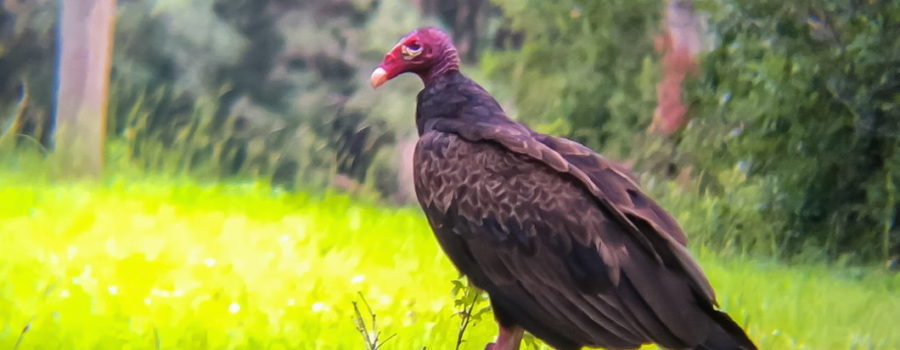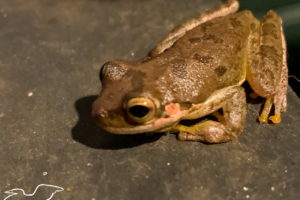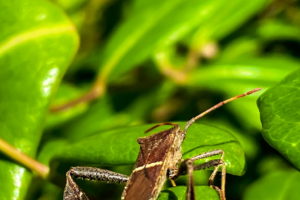Turkey Vultures are Even Better Adapted than Black Vultures

Awhile back I wrote a post about a very under appreciated (but one of my favorites) native bird, the black vulture. Here in Florida we are actually lucky enough to actually have two species of vultures, the black vulture and the turkey vulture. The two species are very similar in a lot of ways, but while the black vulture has black skin on the head and neck, the adult turkey vulture has red skin on the head and neck. The red is similar in tone to the skin on turkeys, hence the name. Juvenile turkey vultures have dusty grey skin on the head and neck which is slightly lighter than that of the black vulture, making them hard to tell apart unless you also look at the feathers. Black vultures have truly black plumage, while turkey vultures have some brown to reddish brown coloration to their feathers. The difference is subtle and seeing definitely depends somewhat on the available light, but if you look carefully, it will allow you to tell a juvenile turkey vulture from a black vulture. Finally, in flight, turkey vultures are have two toned wings, while black vultures have all black wings.

Another major difference between the two types of vultures is their range. Black vultures have a much smaller range than turkey vultures. Black vultures can be found only on the east coast of the United States ranging as far west as Texas and south into Mexico and South America. Turkey vultures, on the other hand, have a much larger range. During the summer breeding season, they can be found in most of the United States and up into southern Canada. During the winter, the range decreases somewhat as the northern birds head south. Still, they range across the southern US and again, into Mexico and South America. In fact, turkey vultures are the most common vulture in North America.

Turkey vultures have an extremely well developed sense of smell that allows them to smell carrion from over a mile away. In fact, turkey vultures have a larger olfactory (sense of smell) brain center than any other kind of bird. Black vultures, on the other hand, have a less developed sense of smell and locate their meals either by sight while soaring, or by following turkey vultures when they scent food. This is one reason that in the parts of their ranges that overlap, it is common to see both species roosting and feeding together.

Both types of vultures are highly adapted to eating carrion in many ways. For example, vultures have bald heads and feet that keep them from getting pieces of their food stuck in feathers. They have very powerful beaks that allow them to tear apart their food, but their feet are relatively weak, and don’t have the gripping power of other birds of prey. They also have a strong stomach acid that is capable of killing most harmful bacteria that might be ingested when eating decaying flesh. Finally, both kinds of vultures are capable of regurgitating a food/acid and bile mixture when frightened or threatened. As you can imagine, that combination has an extremely unpleasant odor. They use this as a protective mechanism similar to the way skunks use their foul smelling spray.

In conclusion, black vultures and turkey vultures have many, many traits in common, and most of those commonalities revolve around adapting to eating carrion. There are several key differences between the two, though. Here in Florida and several other southeastern states, we have both species, but in most of the United States and Canada, only turkey vultures are present. I have always admired and enjoyed watching both types of vultures because of their high degree of adaptability and their ability to live either in wild areas or in close association with human beings. Which kind(s) of vultures do you have in your area? Are they fairly common or rare?





Recent Comments